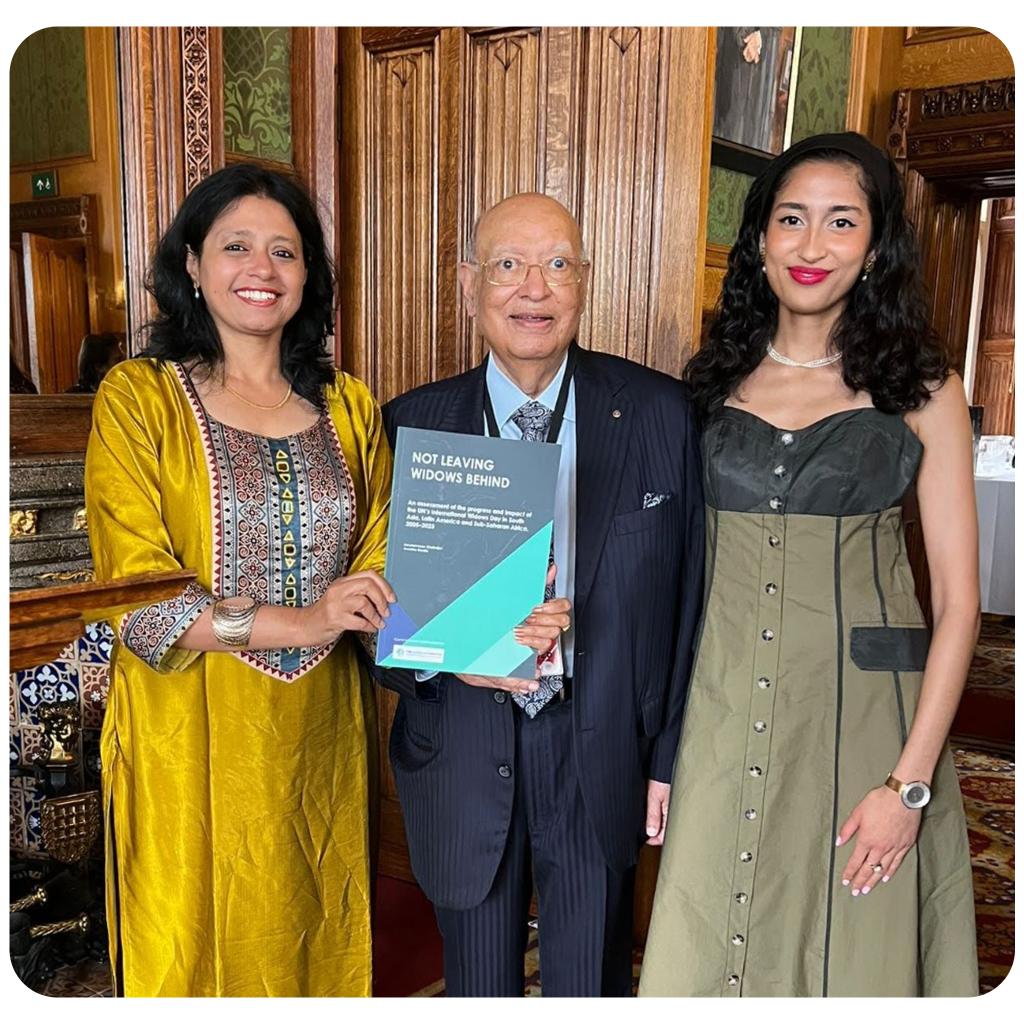Not leaving widows behind:
An assessment study of the progress and impact of the UN’s International Widows Day
in South Asia, Latin America and Sub-Saharan Africa

Losing a spouse or partner is a life-changing event. Women, however, are disproportionately affected by this loss because, in much of the world, the distress of losing a partner is compounded by a long-term fight for their livelihood, dignity, rights, and wellbeing. As widows move through trauma and grief, they might also face economic insecurity, discrimination, stigmatisation, and harmful traditional practices (UN Women, 2021a). Due to women’s longer life expectancy, age gaps in marriage, child marriage of girls and conflict, widows far outnumber widowers throughout the world (UN, 2001). In developed countries, widowhood is primarily experienced by elderly women, while in some developing countries, due to early marriage (including child marriage and custom of marrying young girls to much older men), widowhood is also experienced by younger women.
Cultural restrictions to remarriage in certain societies mean that widowhood remains for the rest of their lives (UN, 2001). According to the latest data there are over 258 million widows worldwide (The Loomba Foundation, 2015).
However, globally the number of widows is rising on a consistent manner due to armed conflicts, increased incidences of natural disasters; forced migration; HIV/AIDS and Ebola; and the recent COVID-19 pandemic. Launched initially by the Loomba Foundation in 2005, the UN finally declared International Widows Day (IWD) on 23rdJune 2011 with a goal of significantly improving widows’ lives. However, even decades later, no framework exists to assess the policy impact of IWD and the extent of progress that has been made. This study aimed to do so aligning with the framework of SDG 5, arguing that the international commitment to gender equality by 2030 cannot be achieved if widows are left behind. The study examined the policy impact of International Widows’ Day in 11 countries across South Asia, Latin America, and Sub-Saharan Africa (Bangladesh. India, Nepal, Sri Lanka, Guatemala, Chile, Kenya, Tanzania, Uganda, Malawi, and South Africa). The results demonstrate that, despite the passage of decades since the day’s original launch in 2005, widows continue to be excluded from national and international policy and comprehensive development programs. The study was unable to evaluate certain important aspects of widows’ lives in the countries under investigation due to a severe lack of empirical evidence and up-to-date data (such as the number of widows who are trafficked or sexually exploited). The study came to the conclusion that while the UN’s establishment of International Widows Day has successfully increased public awareness of the difficulties widows face, realizing meaningful improvements in their quality of life will necessitate a systematic, evidence-based approach to policy formulation as well as the provision of sufficient resources to do so.
Source: Chatterjee, S and Sisodia, A (2024). Not leaving widows behind: An assessment study of the progress and impact of the UN’s International Widows Day in South Asia, Latin America and Sub-Saharan Africa. Document, London, 2024 (ISBN 978-0-9934156-5-4)
